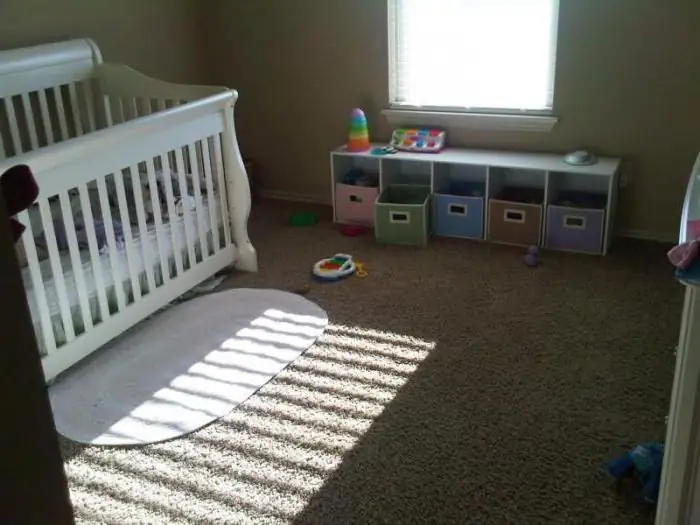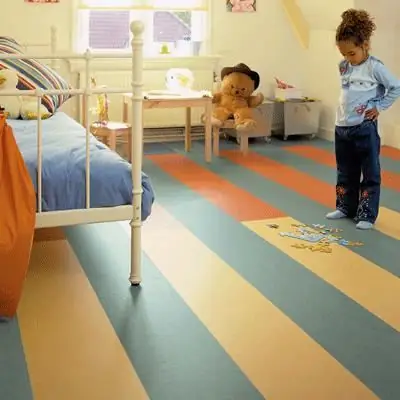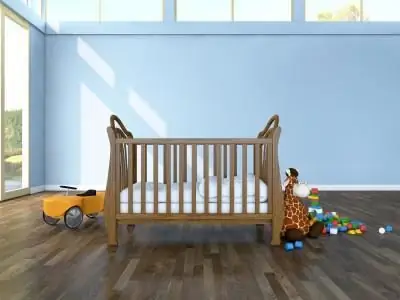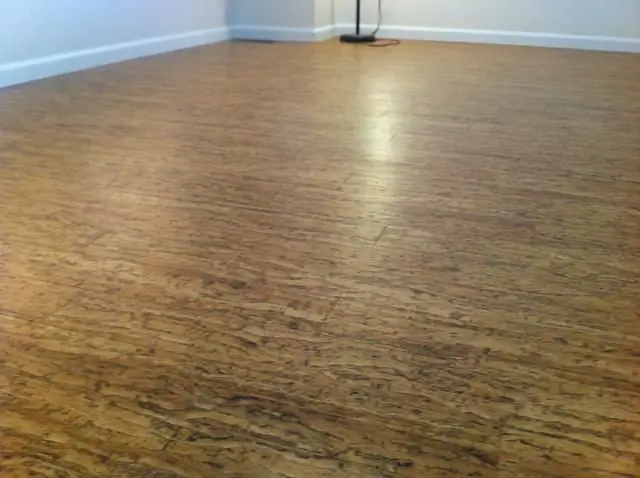How to choose the right flooring for a child's room? Which is better - cork, parquet or laminate? Or maybe you should put a practical linoleum or a soft and comfortable carpet? We will answer these and many other questions.

Flooring for a children's playroom: what should be the material
When choosing flooring for a nursery, parents should forget about such evaluation criteria as price and ease of installation. You need to focus on other characteristics, namely the following:
- Sustainability. The material must be natural or at least not release toxins and carcinogens.
- Safety. The coating should not be too hard or slippery, have bumps, protruding metal elements (corners, screws, nails).
- Hypoallergenic.
- High wear-resistant qualities. Children not only crawl and run on the floor, but also roll cars with metal wheels on it, scratch with different toys.
- Moisture resistance. Flooring for a children's playroom doesn't have to be completely waterproof, like a bathroom, for example, but kids do spill things all the time, so it's important to make sure a child's misstep doesn't become a disaster.
- Resistant to sun fading. As a rule, they try to make the children's room as light as possible, which means that the floors will also be exposed to ultraviolet radiation.
- Easy care and stain resistant. These characteristics are more important for parents, as babies often draw with paints and felt-tip pens on the floor, and mothers have to clean the room several times a day.

Laminate
Although it contains synthetic components, it is considered an environmentally friendly and safe coating. It is resistant to damage, easy to clean and retains heat well. It is also worth mentioning that the price of high-quality laminate has recently decreased due to high competition, it also looks quite modern.
This kids room flooring is the perfect option for those who want to install underfloor heating.
There are also disadvantages: the laminate can be very "noisy" if it is incorrectly placed or used too thin a substrate, in addition, plasticine is poorly peeled off from it, it is rather slippery and often burns out in the sun. And low-quality laminate emits formaldehyde and harmful resins, so you need torequire a certificate of quality in the store.
PVC tiles
The flooring for the children's room should not be made of PVC tiles. This simple rule used to be based on the characteristics of the material: the floor turned out to be slippery, cold, in addition, synthetics inspired concerns in terms of the safety and he alth of children.

Today everything has changed. Modern PVC tile is a high-quality, comfortable, warm, wear-resistant material with shock-absorbing properties, resistant to high humidity and temperature extremes. Despite the fact that the coating is 100% synthetic, it has a special hygiene certificate. It does not deform under the weight of heavy furniture, it is easy to wash and clean, and any damaged tiles are easy to replace.
Initially, PVC tiles were intended exclusively for the kitchen and corridor, but in some houses they began to lay them in children's rooms.
Linoleum
This flooring for an economy class children's room is inexpensive and practical. This material is not afraid of water, it has good wear resistance, especially for semi-commercial or commercial, and in a good scenario, it will last for decades. Washing linoleum is very easy, you can do wet cleaning in the nursery several times a day.
However, many parents do not even consider this option, as such material is considered not environmentally friendly. In addition, wet linoleum can lead to falls, injuries and bruises. Another bad thing is the smell. Cheap low quality linoleumit smells very strong even in a huge trading floor, and if you lay it in a small room, the smell becomes simply unbearable. But this drawback can also be found in other coatings, whose manufacturers neglected quality standards. For example, carpet or PVC tiles can also have a specific aroma. It is better to refuse such a purchase immediately.
Today you can find marmoleum or environmentally friendly linoleum in the markets. It is made up of 95-97% natural substances, it is more difficult to care for it, and it is not as durable as other materials. But this coating is safe, and manufacturers increase its wear resistance from year to year.
Carpeting
Many parents choose soft flooring for their children's room, namely carpet. With him, the room seems cozy and comfortable, and given that the kids spend most of their time on the floor, this option seems quite logical. But the carpet has many disadvantages: it accumulates electricity, as it is made of synthetics; it collects a lot of dust, which is why it is unsafe for children, even if it was made from hypoallergenic materials. This coating also does not like high humidity in the room, and for babies, on the contrary, doctors recommend breathing moist cool air. Carpet is very easy to spoil or stain, plasticine and other substances leave stains on it, so there is a possibility that it will quickly lose its original appearance.

More families are nowrefuse carpet in favor of other materials or make a combined floor (laminate + carpet) with separate functional areas. In addition, it is useful for buyers to know that, in addition to hypoallergenic, there are also antistatic synthetics.
Cork floor
Cork is the best flooring for a child's room. The photo below shows how good this material looks, but it is appreciated not only for its attractive appearance. The cork floor is warm, elastic, with high shock-absorbing properties, which means that children will have less stress on the spine. It is 100% natural and therefore safe. The disadvantages of this material include intolerance to high humidity.

However, there are a lot of negative reviews about this flooring. The thing is that, under the guise of a full-fledged material, unscrupulous sellers (manufacturers) hand the buyer an ordinary screed for laminate, the so-called technical plug. Such a floor will not last even a year, since it has low wear resistance, it quickly deforms.
Parquet
Which flooring is best for a child's room? Of course, one that is made from natural materials. In this regard, parquet has only pluses - it is safe, environmentally friendly, warm, not noisy (compared to laminate). The disadvantages include the fact that the parquet is easily damaged (scratches and small irregularities can be easily eliminated). In addition, this material does not like changes in humidity and temperature. And of course,for parents, the cost of finishing is important, and good parquet is expensive.

Heated floors and soft puzzle mats
Flooring in a children's room is often supplemented with a "warm floor" system. But it can not be mounted under every material, and in some cases it is simply impossible to do this. In addition, it is not recommended to lay an electric heated floor in the nursery. This is due to the fact that the child will be affected by electromagnetic radiation. Therefore, in rooms where babies spend a lot of time, it is better to install a water heated floor.
Recently, more and more often in the rooms you can see light colored tiles made of foamed polymer, gathering, like a puzzle, into a large canvas. It can hardly be called a full-fledged floor covering, rather an alternative to carpet and carpet. This material is good in every way - it is soft, safe, easy to clean, and it is interesting for children to play with it. In addition, any damaged piece of this puzzle can be removed or replaced.






